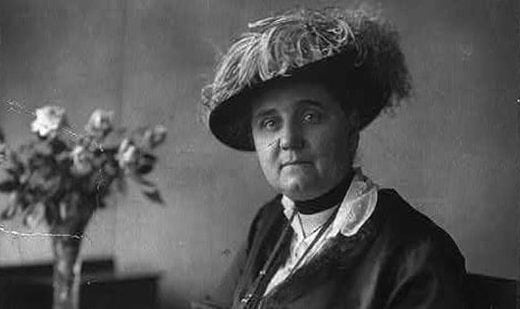Imagine a stone being tossed into a calm pond, creating a series of expanding circles. In a similar way, Jane Addams’ pioneering work at Hull House in Chicago sent reverberations throughout the field of social welfare in the United States. Her legacy as the first social worker in the USA is profound, but there’s more to uncover about her impact and the lasting influence she had on societal norms and policies.
Early Life and Education of Jane Addams
Jane Addams, born in 1860 in Cedarville, IL, pursued her education at Rockford College, graduating in 1882. Addams’ educational journey played a crucial role in shaping her future endeavors in social service and philanthropy. In 1888, Addams embarked on inspirational visits, one of which led her to Toynbee Hall in London. This visit deeply impacted her, motivating her to establish Hull House in Chicago, a groundbreaking settlement house aimed at providing essential services to the community. In 1889, she leased a property built by Charles Hull, where she began her philanthropic endeavors.
Through her impactful work at Hull House, Addams laid the foundation for her lifelong commitment to social reform. Her dedication to uplifting marginalized communities and advocating for social change was evident in the services she provided, ranging from kindergartens to employment bureaus. Addams’ early life and educational experiences were instrumental in shaping her vision for Hull House and her impactful contributions to the field of social work.
Establishment and Services of Hull House
Establishing Hull House in Chicago in 1889 marked a pivotal moment in social service and community development. Jane Addams intended Hull House to be a hub for social progress, education, and democracy, with a focus on poverty reduction through a variety of services. These services included kindergarten, day care, art galleries, libraries, and an employment bureau. By its second year, Hull House was already serving over 2,000 residents weekly. The establishment expanded by 1900 to include a book bindery, gym, theater, and labor museum, enriching the community through cultural activities and educational programs. Addams, along with Florence Kelley, Alice Hamilton, and others, initiated programs like the Immigrants Protective League and the Juvenile Protective Association, advocating for protective legislation for women and children. The holistic approach taken at Hull House was instrumental in supporting the community through a combination of social services, education, and cultural enrichment.
Social Programs and Legislation
How did social programs and legislation initiated by Jane Addams and her colleagues at Hull House impact the welfare of women and children in the community during the late 19th and early 20th centuries? Jane Addams and her associates, such as Florence Kelley and Alice Hamilton, spearheaded critical initiatives at Hull House. They established programs like the Immigrants Protective League and the Juvenile Protective Association, advocating for protective legislation to safeguard women and children. Addams played a pivotal role in founding the National Child Labor Committee, aiming to eradicate exploitative child labor practices. Additionally, she championed women’s suffrage and the American Civil Liberties Union, contributing significantly to the advancement of women’s rights and social reform. Through these efforts, Addams and her collaborators catalyzed changes that aimed to protect vulnerable populations and promote a more just and equitable society, leaving a profound impact on the welfare of women and children in the community during that era.
International Peace Movement
In the realm of international peace advocacy, Jane Addams played a prominent role through her collaboration with organizations like the Women’s Peace Party and the Women’s International League for Peace and Freedom. Addams opposed American involvement in World War I, emphasizing the importance of rediscovering compassion during large-scale warfare. Her anti-war activism and humanitarian efforts left a global impact, leading to her recognition with the Nobel Peace Prize in 1931.
- Addams’ opposition to World War I
- Collaboration with the Women’s Peace Party and Women’s International League for Peace and Freedom
- Advocacy for peace and humanitarian efforts
- Emphasis on rediscovering compassion during warfare
- Global impact of Addams’ anti-war activism
Through her dedication to peace advocacy and relentless pursuit of global harmony, Jane Addams made significant contributions to the international peace movement, solidifying her position as a key figure in promoting compassion and understanding on a global scale.
Legacy and Contributions
Continuing Jane Addams’ impactful journey in promoting peace and social reform, her legacy and contributions resonate as enduring pillars of advocacy and change in the realm of social welfare and global harmony. Addams played a pivotal role in shaping federal legislation, particularly in the establishment of the Federal Children’s Bureau and Federal Child Labor Law, which aimed to protect the rights of vulnerable populations, specifically children. Through her unwavering commitment to social advocacy, she spearheaded humanitarian efforts that focused on community empowerment and philanthropic initiatives. Addams’ work at Hull House and her involvement in various organizations exemplified her dedication to improving social welfare and promoting peace. Her leadership and contributions have left an indelible mark on the field of social work, emphasizing the importance of collective action and compassion in creating a more just and equitable society.
Jane Addams and Hull House
Jane Addams’ establishment of Hull House marked a significant milestone in the history of social welfare and community support in the United States.
- Community Outreach: Hull House focused on reaching out to the community, especially immigrants and the underprivileged, to provide them with essential support and resources.
- Social Services: Addams integrated various social services at Hull House, including healthcare, education, and housing assistance, to address the diverse needs of the residents.
- Cultural Activities: Hull House offered cultural activities such as art galleries, theaters, and libraries to enrich the lives of those it served and promote cultural exchange.
- Immigrant Support: Addams recognized the importance of supporting immigrants and worked tirelessly to provide them with a welcoming environment and assistance in adapting to their new lives.
- Women’s Suffrage: Hull House played a crucial role in the women’s suffrage movement, advocating for women’s rights and empowering them to participate in shaping the future of society.
Through Hull House, Jane Addams created a holistic approach to social reform, combining community engagement, social services, cultural enrichment, immigrant support, and advocacy for women’s suffrage to address the pressing issues of her time.
Social Workers and Their Importance
Social workers play a crucial role in society by specializing in building and maintaining healthy relationships, providing counseling, and offering intervention services to address a diverse range of issues affecting individuals and communities. They engage in community outreach, focusing on mental health, family dynamics, crisis intervention, and advocacy efforts. Social workers provide support and resources to individuals facing challenges, such as mental health disorders, family conflicts, or traumatic events. Through educational programs, they equip people with skills for better relationships and personal development. The National Association of Social Workers (NASW) leads advocacy efforts, organizing conferences and collaborating with charitable organizations to promote social reform. By ensuring individuals in need receive necessary help, social workers contribute to the well-being of society. Their dedication to professional development and education enhances their ability to make a positive impact on the lives of those they serve.
The Contributions of Jane Addams
Building upon the impactful role of social workers in society, Jane Addams left a lasting legacy through her pioneering contributions in social reform and peace advocacy. Addams was a leader in the settlement house movement and an advocate for various causes, including women’s rights, labor rights, and child welfare. Her efforts extended beyond national boundaries, as she co-founded the Women’s International League for Peace and Freedom and supported legislative actions for vulnerable populations. Here are five key aspects of Jane Addams’ contributions:
- Championing Social Reform: Addams actively campaigned for social reform initiatives, striving to improve the living conditions of marginalized communities.
- Advocating for Women’s Rights: She was a prominent figure in the fight for women’s rights, working towards achieving gender equality and empowerment.
- Promoting Child Welfare: Addams played a crucial role in advocating for legislation to protect children from exploitation and unsafe working conditions.
- Supporting Labor Rights: She stood up for the rights of workers, advocating for fair labor practices and improved working conditions.
- Engaging in Philanthropic Advocacy: Addams dedicated her life to philanthropic endeavors, supporting various charitable causes and initiatives aimed at aiding those in need.




